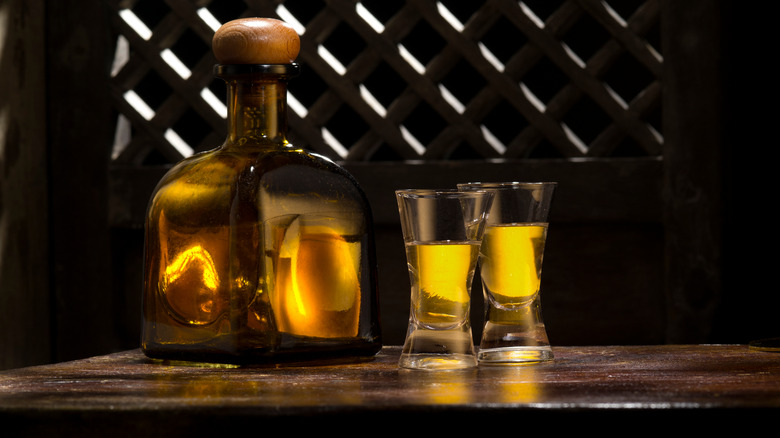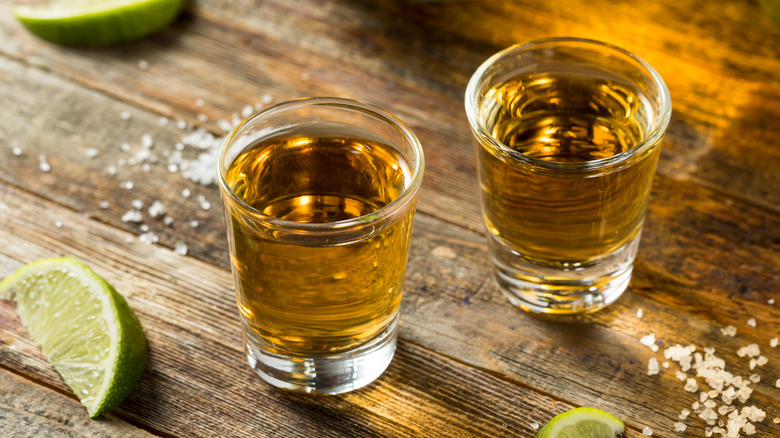Why Is Extra Añejo Tequila Typically So Much More Expensive?
Part of tequila's allure is the spirit's accessibility. Fast-growing in both sales and production, the agave liquor is available all around the U.S., oftentimes at an affordable price point. Yet although there are many delicious budget options available, several high-end expressions exist, too.
Tequila is found in several types, and there's a noticeable increase in price point when opting for barrel-aged styles like añejo. This agave expression spends anywhere from one to three years in specifically oak barrels, imbuing a golden hue and wood-influenced complexity. A tasty option for fans of barrel-aged spirits like whiskey, it's a style that's typically a little more top-shelf than reposado and blanco liquors.
However, it's not the most luxurious offering available — that'll be the extra añejo. A relative newcomer, the liquor received a distinct designation only in 2005. This spirit spends over three years in a barrel, initially filling the cask with the best blanco tequila available. Made with deft expertise oftentimes using various barrels, it's a time- and labor-intensive spirit that commands the steepest prices. Often released in small "rare" releases, like Jose Cuervo's 2023 Reserva de la Familia, it's the tequila expression worthy of special occasions.
Extra añejo tequila's barreling duration and skill command higher prices
Tequila is one of the more regulated spirits, which ensures specific standards for such pricy renditions. In addition to a limited region of production enacted for all tequilas, the extra añejo style is constrained to exclusively oak barrel aging, with a capped volume of 600 liters. The desired flavor is smooth yet complex, with a balance of underlying barrel notes that don't dominate over the agave. In addition to the extended time needed to make the spirit, some of it also evaporates in the barrel, only further driving up the cost.
Creating such a spirit — which takes years to develop — requires a deft mastery of both agave distillation and aging. Distillers experiment by employing specific barrels, some of which are more expensive but imbue special notes. Sometimes, the liquor is also from a noted harvest, further adding to the esteemed status. Throw in special bottlings and limited releases, and it becomes clear why a rendition can creep into a price range of several thousand dollars. As a result, this variety isn't the best tequila for cocktails but instead reserved for sipping straight.

